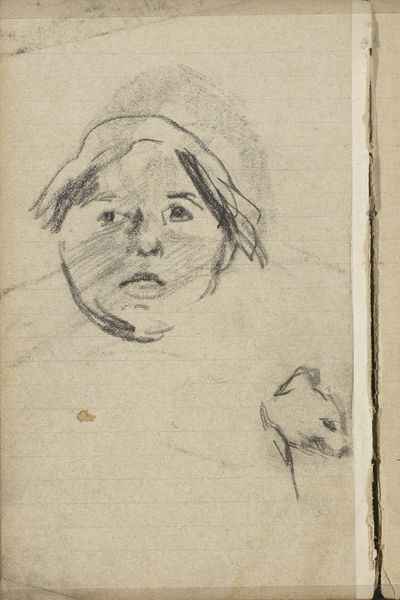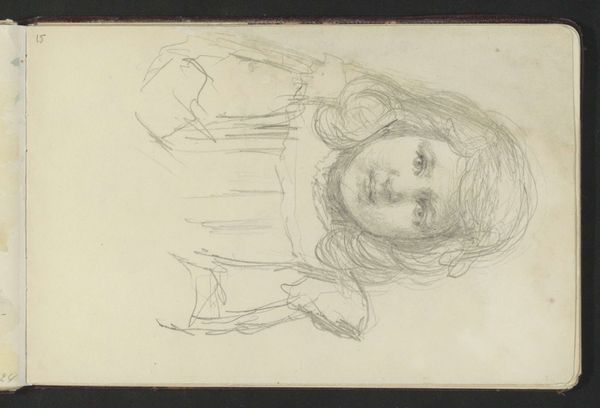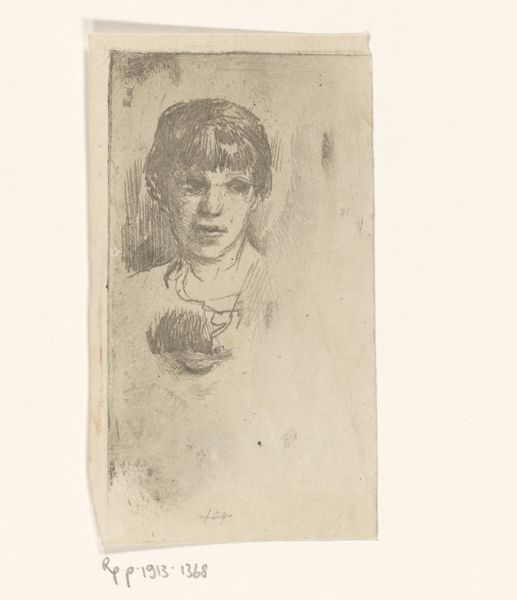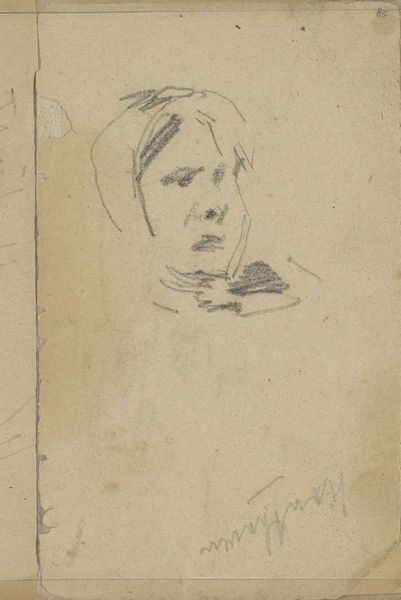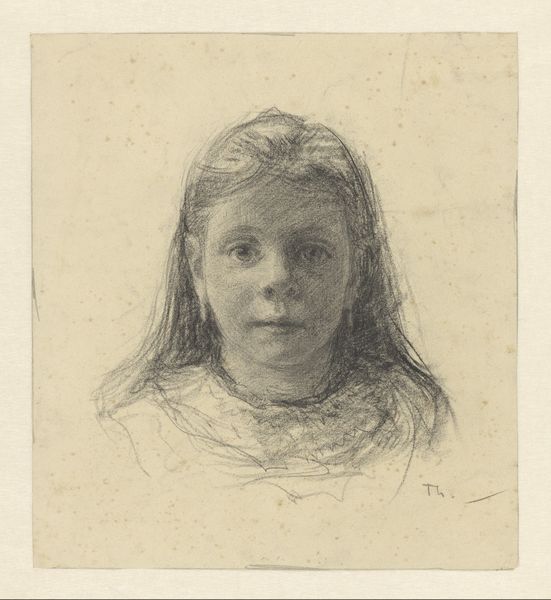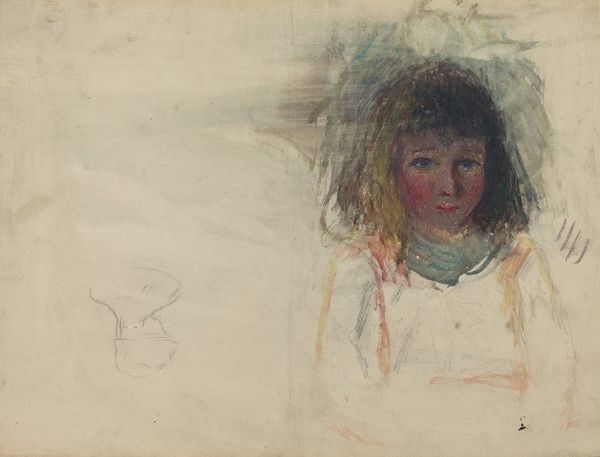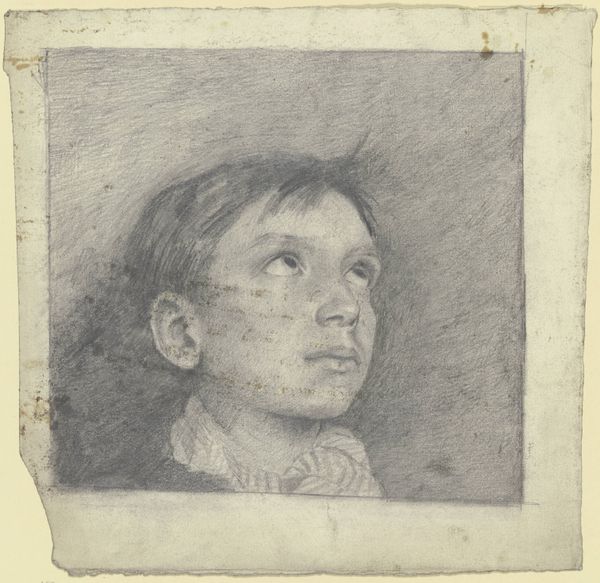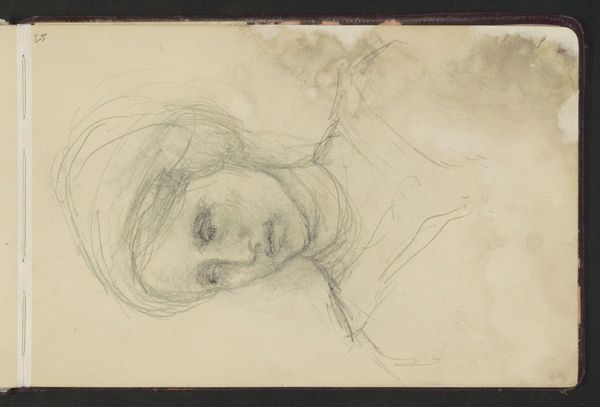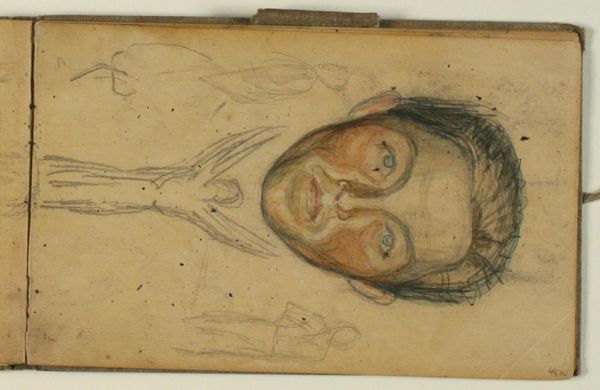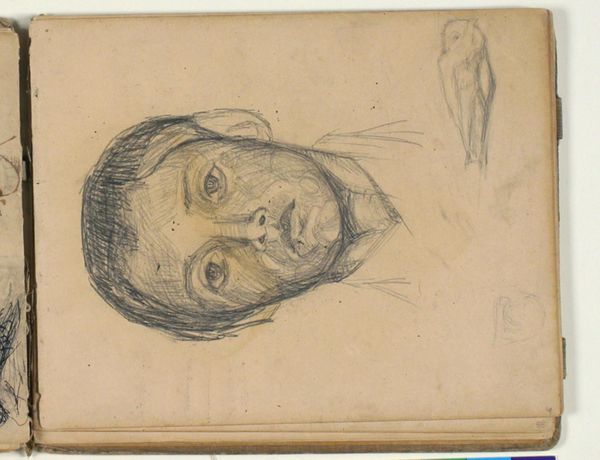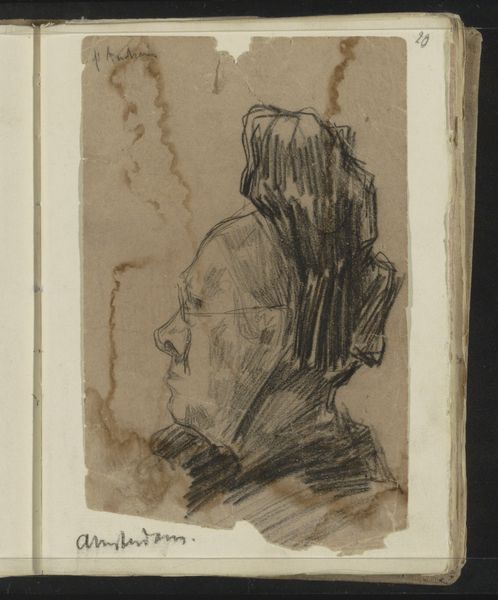
Copyright: Rijks Museum: Open Domain
Editor: Here we have Floris Arntzenius's portrait of singer Tilly Koenen, created sometime between 1883 and 1914, using a pencil. There is an unfinished quality to this portrait. What stands out to you about how it was made? Curator: Well, it's interesting to consider the raw materials here. Cheap paper, a readily available pencil. This speaks to the accessibility of art-making, doesn’t it? Art becomes democratized to a degree. It’s no longer just the domain of the wealthy with access to expensive oils and canvas. Editor: Absolutely. So the *choice* of pencil and paper impacts the kind of art that can be created? Curator: Exactly. Arntzenius’s artistic choices have significant ramifications. Consider also the labor involved. The act of drawing, the time it takes. Compare this to the rise of photography at the time, a supposedly quicker, more “efficient” way to capture a likeness. What does choosing to draw in this context suggest about valuing process over pure product? Editor: It implies a conscious decision to engage with the subject in a slower, more deliberate way. It seems almost…defiant, perhaps, against the tide of industrialization? Curator: A valid point. And how does the rough, unfinished quality of the sketch play into this? Could it be argued that this unfinished state allows for greater engagement with the *process* of the drawing, revealing more about artistic labor and decision-making than a polished portrait might? Editor: I think so. Seeing the bare strokes lets me think more about the choices of what to emphasize in the portrait and the way they were constructed. Curator: Precisely. So it shows it's more than just representing an image of Tilly Koenen. Editor: This really shifts my perspective on the artwork. Thank you for sharing.
Comments
No comments
Be the first to comment and join the conversation on the ultimate creative platform.
